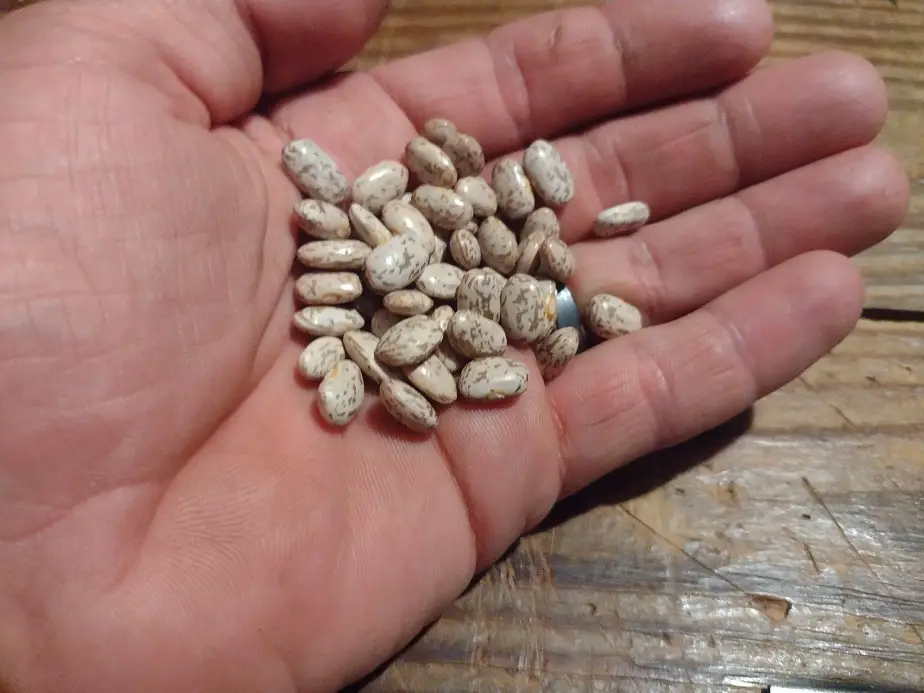Geen beans are tasty and dry beans are a great protein source. Learning to grow them right should be a priority.
Beans need to be planted in warm soil, after the threat of frost. They need moderately fertile soil and moderate but even amounts of water. Beans do not do well planted under other crops. They need good sun and airflow. Shelled beans should get 10+ hours of sun.
Beans are easy to grow but are sensitive to fertilizer and water imbalances, and fungal issues.
When to Plant beans in Michigan
Plant Green Beans after the soil has warmed to 60 degrees, usually in late May or Early June. Plant seeds an inch deep, 4 inches apart in moderately fertile soil with 8+ hours of sun. Soil should be loose and well-drained, and have good organic matter. Beans can be planted as late as July and still get a decent harvest.
Beans need at least 60-degree soil to germinate. That’s the minimum and they often have issues at that temperature. Cool soil causes slower germination, which makes tender seedlings susceptible to damage and disease. You will often get poor emergence if you plant in exactly 60-degree soil.
If the soil is at the minimum, then we get a week of cool, overcast weather, the soil will cool off and beans will not emerge well. Then you’ll have to go through and re-plant some. It’s better to wait a little longer than to plant a little early. Also, bean seedlings don’t do well in water-logged spring soil. It can kill them.
Beans are quite sensitive to waterlogged soil. It chokes off their shallow roots. If your soil isn’t well drained, don’t try and plant beans early. Even if the temperatures warm up enough, the heavy rains of May can choke out young bean sprouts.
Fertilizing Beans
A common fertilizer application for garden beans is one level tablespoon of 10-10-10 fertilizer per 10 square feet of, two weeks before planting. Two-three weeks after planting, test the soil again to see if a second, 50 percent application is needed.
Before you plant anything, you need to test the soil to see where it’s at. As always, I recommend the LusterLeaf 1602 soil test kit. Maybe someday they’ll pay me for advertising for them. Anyways, if the results come back somewhere between 3 and 4, you probably won’t need any fertilizer.
Most likely, you need to fertilize. Beans are one of the few garden plants that actually seem to prefer the basic 10-10-10 or 20-20-20 NPK ratio for fertilizer. Professional growers often get a bit more technical, but that basic fertilizer will do pretty good.
Pole beans are fertilized at a rate of 100 pounds of Nitrogen per acre. Bush beans are usually fertilized at 50-60 pounds N per acre. To put it in perspective, pumpkins also usually get 100 pounds per acre and corn gets 200. Too much fertilizer causes extra fast growth, which makes the plant more disease susceptible.
In clay, heavy silt, or heavy organic matter soil, you won’t need as much because the soil won’t wash out in the rain. If your soil is very sandy, you may need to apply it at up to a 50 percent higher rate. A little too much won’t hurt anything, especially if it’s the proper balance.

What Grows Well With Beans?
Small plants like radishes, beets, and turnips can be planted next to beans. Beans will fave fungal issues if overcrowded by larger plants. Planting beans with heavy nitrogen crops like corn will cause the beans to give poor yields. Beans need full sun, airflow, and not too much nitrogen.
the idea of planting beans with corn isn’t really a good one. The two crops have very different growth and fertilizer requirements. Here’s the problem. If I fertilize properly for corn, beans simply won’t produce. If I fertilize lower to make beans happy, corn won’t produce well.
And, the corn will shade beans, even pole beans. It really just isn’t the best option. I’ve tried it, and others have tried it. The same thing happens every time, poor yields.
If you’re planning on harvesting dry beans, then you really need good sunlight and airflow. As the pods die back, they will mold and rot if they don’t dry out quickly. For dry beans, focus on giving them as much light as possible.
Tips for Harvesting Green Beans
Green Beans should be picked young when they’re no thicker than a pencil. If they get larger, they’ll get tough, stringy, and cling stronger to the plant which often damages the plant stem during harvest. If the beans are not easily pulled from the plant, pinch them off with your thumbnail while pulling.
It’s often ill-advised to harvest beans when the plants are wet. That can make them more susceptible to Bean Rust and Blight If it gets bad, you will plant will only produce yields of about 50 percent due to stress. As always, be gentle around your plants. And break in the plant skin can be a route for infection.
When you do pick them, use or refrigerate them as soon as possible. Beans start to lose moisture and go limp very quickly in warm weather. That makes them lose their fresh, sweet flavor.

